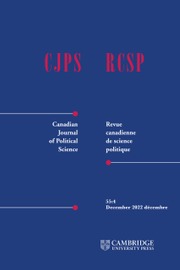John Peters' Jobs with Inequality: Financialization, Post-Democracy, and Labour Market Deregulation in Canada is a timely and important book. Peters, an associate professor in Industrial Relations at Université de Montréal who focuses on political economy and labour markets, has written a book not just about rising economic inequality in Canada, but the politics and forces that has made it possible.
The first thing one notices about the book is how thoroughly researched it is. There is voluminous data on income inequality, contributions to provincial political parties and interviews with public servants, union and political staffers. It synthesizes an impressive amount of data to make the case that not only has economic inequality in Canada increased, but as the economy has become subordinate to finance, job quality and wages have declined, leading to democratic institutions that have become mostly unresponsive to ordinary citizens, which he terms “post-democracy” (p. 6).
Peters begins the book with an overview of critical political economy and its analyses of how the rise of finance has degraded labour market conditions for workers. He then turns to how financialization has developed in Canada and places the country within the international context of this phenomenon. It is a stunning picture of how the gains in economic growth in Canada have been disproportionately captured by the wealthy since the 1990s. The rise of financialization has intensified the attempts by business to push down wages and create flexibility in the labour market to control costs, the savings of which are passed to shareholders or used for stock buybacks, which further boost a company's equity value.
The chapters on British Columbia, Newfoundland and Labrador and Ontario provide the meat of the book, and this is where it really shines. Peters examines the financial, labour market and political evolutions of these provinces in the early twenty-first century. He sees three different processes at work in each province. In BC, Gordon Campbell's Liberal government embarked on aggressive “reform” of the labour market that eroded conditions for workers. Newfoundland and Labrador experienced a “stasis” in labour market regulation due to the offshore oil boom. Finally, in Ontario, there was a “drift” because while the Liberal government there did little to change labour law, low-wage work grew due to this inaction.
Peters clearly illustrates how different balances of forces within each province helped to contribute to the type of regulation. In BC, the Liberals were able to aggressively alter labour law because of a united front of business and were able to rely on votes of the well-off, while voter turnout among those with lower incomes declined. The union response was inadequate, and BC unions lost members during the Campbell years (p. 217).
Newfoundland was a unique case, as the offshore oil boom allowed Danny Williams’ Progressive Conservatives (PCs) to build a very broad alliance that included resource companies, unions and inhabitants of the province's small rural communities (p. 226). While this did not lead to a Norway-style, oil funded welfare state, there were improvements for public sector workers and in infrastructure that kept the government popular and working conditions stable even if there were no laws enacted favouring workers.
In Ontario, Dalton McGuinty and later Kathleen Wynne's Liberal government did little until the very end to alter labour law in any way. After the tumultuous years of Mike Harris’ PC government, the Liberals managed to put together a coalition of capital-intensive industries, public sector workers and the middle and working classes of the Greater Toronto Area. While home values shot up and infrastructure was built, little was done to stop the spread of low-wage work and evasion of labour laws through the increase in temp workers. Ontario's labour movement was far too divided to be able to advance any progressive agenda (p. 325).
These analyses also highlight the shortcomings of Peters’ approach. The question of what constitutes post-democracy is the most obvious. In all the case studies, business has a disproportionate amount of power. However, as Peters points out, there are clear, if diminished, countervailing forces like unions and civil society that condition labour market reforms. These forces have been unable to advance, often because of their own internal divisions. Thus, influence within a democratic society has not been completely closed off. What we are left with is a lack of a strong explanation of when democracy becomes post-democracy.
While the book's case studies are strong, there are other examples that could have been illuminating. First is a province like Manitoba or Saskatchewan to understand how New Democratic Party governments have handled financialization. Then there is Quebec, where the province's two traditional parties, the Liberals and the Parti Québécois emerged from the first two decades of this century much diminished. Understanding the impact of financialization on Quebec's social model could teach us something about trying to maintain a contemporary welfare state.
These shortcomings are hardly a fatal flaw. If anything, they open pathways for others to expand upon Peters’ work. Jobs with Inequality is a must-read for students and scholars in political science, political economy, labour studies and public policy to understand the scale of inequality and its different manifestations across Canada.


